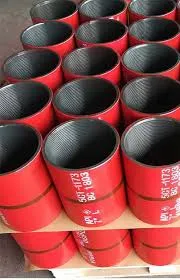- Afrikaans
- Albanian
- Amharic
- Arabic
- Armenian
- Azerbaijani
- Basque
- Belarusian
- Bengali
- Bosnian
- Bulgarian
- Catalan
- Cebuano
- Corsican
- Croatian
- Czech
- Danish
- Dutch
- English
- Esperanto
- Estonian
- Finnish
- French
- Frisian
- Galician
- Georgian
- German
- Greek
- Gujarati
- Haitian Creole
- hausa
- hawaiian
- Hebrew
- Hindi
- Miao
- Hungarian
- Icelandic
- igbo
- Indonesian
- irish
- Italian
- Japanese
- Javanese
- Kannada
- kazakh
- Khmer
- Rwandese
- Korean
- Kurdish
- Kyrgyz
- Lao
- Latin
- Latvian
- Lithuanian
- Luxembourgish
- Macedonian
- Malgashi
- Malay
- Malayalam
- Maltese
- Maori
- Marathi
- Mongolian
- Myanmar
- Nepali
- Norwegian
- Norwegian
- Occitan
- Pashto
- Persian
- Polish
- Portuguese
- Punjabi
- Romanian
- Russian
- Samoan
- Scottish Gaelic
- Serbian
- Sesotho
- Shona
- Sindhi
- Sinhala
- Slovak
- Slovenian
- Somali
- Spanish
- Sundanese
- Swahili
- Swedish
- Tagalog
- Tajik
- Tamil
- Tatar
- Telugu
- Thai
- Turkish
- Turkmen
- Ukrainian
- Urdu
- Uighur
- Uzbek
- Vietnamese
- Welsh
- Bantu
- Yiddish
- Yoruba
- Zulu
Understanding the Importance of Pup Joints in Tubing Systems for Enhanced Efficiency
Understanding Pup Joints and Their Role in Oil and Gas Operations
In the oil and gas industry, efficient transportation of fluids is paramount, and the equipment used for this purpose needs to be robust and reliable. One such critical component is the pup joint. A pup joint is a short length of pipe, often used to adjust the length of a string of tubulars, which are essential for various drilling and production applications. This article will explore the purpose, types, and applications of pup joints in the oil and gas sector.
What is a Pup Joint?
Pup joints are typically manufactured from the same material as the larger pipes they accompany, often high-strength steel with adequate resistance to corrosion. They come in various sizes and lengths, usually ranging from a few inches to several feet, depending on the operational need. Their primary purpose is to provide flexibility in the lengths of pipes, allowing for precise adjustments in wellbore operations.
Types of Pup Joints
Pup joints can be categorized based on several factors
1. Length and Diameter Pup joints can come in different lengths and diameters, tailored to suit specific operational requirements. Common lengths include 2, 3, or 5 feet, with diameters that match or complement the existing pipes.
2. Threading The ends of pup joints can be threaded for easy connection to existing tubing or casing. Common thread types include API (American Petroleum Institute) and proprietary threads designed for specific applications.
3. Connection Types Beyond threaded connections, pup joints can also feature welded ends or flanged fittings, providing versatility for different installations.
4. Material While steel is common, pup joints can also be made from other materials like stainless steel or non-corrosive alloys, especially when working in challenging environments prone to corrosion.
pup joint tubing

Applications of Pup Joints
Pup joints serve multiple purposes in drilling and production operations, including
1. Length Adjustment One of the primary uses of pup joints is to make minor adjustments in the overall length of the drill string, casing, or tubing string. This ensures a precise fit within the wellbore, minimizing the risk of complications during operations.
2. Interfacing Different Components Pup joints can bridge the gap between different sizes of pipes, allowing operators to connect tubing or casing of varying diameters without compromising the integrity of the pressure seal.
3. Testing and Monitoring They are often used to create a test string in the well for pressure testing or to introduce monitoring equipment at specific depths.
4. Specialized Functions In some operations, pup joints are customized to accommodate specific tools or equipment, such as packers or safety valves, enabling more sophisticated techniques for extraction.
Conclusion
Pup joints may seem like minor components in the grand scheme of oil and gas operations, but their role is undeniably significant. They provide the flexibility and adaptability needed in dynamic drilling environments, allowing operators to maintain control while maximizing efficiency. With continuous advancements in materials and manufacturing processes, pup joints are evolving to meet the rigorous demands of exploration and production activities.
In summary, pup joints are indispensable in the oil and gas industry, facilitating precision in the installation and operation of various tubing and casing systems. As the industry continues to grow and evolve, the importance of such components will only increase, ensuring that exploration and production can proceed safely and efficiently in ever-challenging environments. Understanding the nuances of pup joints not only enables operators to make informed decisions but also ensures that they can adapt to the demands of modern oil and gas extraction methods.
-
Well Casing Extension Couplings – Applications and InstallationNewsJun.06,2025
-
Types of Crossover Subs in Drilling & CompletionNewsJun.06,2025
-
Key Features of High-Quality Tubing Pup JointsNewsJun.06,2025
-
Installation and Maintenance Tips for Steel Couplings for PipeNewsJun.06,2025
-
How to Select the Right Pup Joint for Oil & Gas OperationsNewsJun.06,2025
-
Applications of Stainless Steel Pipe CouplingsNewsJun.06,2025







